#Alexander Vesnin
Text

Alexander Vesnin - Untitled (Geometrical Drawing)
5 notes
·
View notes
Photo

Alexander Vesnin
Victory over the sun
10 notes
·
View notes
Photo








The Lenin Institute for Librarianship by Ivan Leonidov (1927)
from Fosco Lucarelli’s article for SOCKS :
Ivan Illich Leonidov (1902-1957) designed the Lenin Institute for Librarianship (the collective scientific and cultural center of the USSR) in 1927 as his thesis project at the VKhUTEMAS, the art and technical School of Moscow, with Alexander Vesnin as his tutor.
The Institute is made of a series of individualized shapes embodied by clear geometrical forms – mostly rectangular boxes and a sphere – which are boldly composed together.
The three main buildings of the institute are a massive library with five million books joined by the Institute of librarianship, both contained in a high-rise building; the auditorium which also functions as a planetarium and as a speaking platform for mass demonstrations, located in a huge glass sphere elevated from the floor through a metallic structure; and the actual research institute hosting the research labs, a horizontal slab, suspended, which also connects the two other buildings. The single volumes are related through the composition of two asymmetrical axes on a decentralized circular platform where both the auditorium and the library are located. The library axis is also prolonged by a straight suspended roadway leading to the city center.
An important feature of the overall design is the presence of steel cables with the double role of guy-wires in tension and radio communication antennae. The cables counterbalance the anti-gravitational effect of the highest buildings and especially that of the auditorium which appears as a hot-air balloon ready to take a flight. They also underline the idea of communication among the people working together in the institute and in the whole country.
The center was supposed to be located in Moscow, on the Lenin Hills, the highest spot in the city, just a few kilometers southwest of the Red Square. An aerial tramway with a central aerodrome and suspended roadway would have connected the institute with the center of the city while the radio station would have put it in communication with the whole country.
As to underline an era of unlimited faith in an upcoming technological world, the role of technology is formally and functionally expressed throughout the whole project, especially in the library where an automated book-delivery system with a vertical and horizontal conveyor system delivers the books directly from the stacks to the reading rooms.
The sphere is the most evolutive area: as an auditorium, it can host up to 4000 people, but it can be repartitioned through mobile suspended walls in order to contain smaller audiences. When half of the sphere is opened, and all the seats are withdrawn into the remaining half, it can also be used as a speaking platform for mass gatherings. The sphere of the Planetarium can turn into a science theater after projection screens are installed along the inside skin.
A system of elevators provides access to the auditorium.
The whole institute is equipped with communication technology like telephones, radios, and remote televisual pieces of equipment so that the whole staff can work together at the same time.
7 notes
·
View notes
Photo


Chris Evert, 1975. Her flesh ennobled the polyester roll, worthy of Florentine Carrara marble drapery
Alexander Vesnin, 1912
1 note
·
View note
Photo
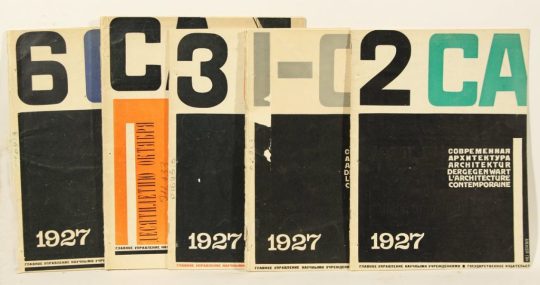
Colección completa de la Revista CA Sovremennaya arkhitektura [Современная Aрхитектура]
#Aleksandr Mijáilovich Ródchenko#Alexander Vesnin#Anton Mikhailovich Lavinsky#Archigram#arquitectura constructivista#arquitectura racionalista#arquitectura rusa#arquitectura socialista#arquitectura soviética#arte#arte contemporaneo#cine#constructivismo#constructivismo ruso#cubismo#diseño gráfico#Eduardo Almalé#escultura#estética#futurismo#grafismo#Gustav Klutsis#historia#Jelena Prokopljević#Konstantín Stepánovich Mélnikov#literatura#moda#modernismo soviético#Moisei Yakovlevich Ginzburg#música
3 notes
·
View notes
Photo

Le Corbusier, Andrey Burov and Alexander Vesnin, Moscow 1928
122 notes
·
View notes
Photo




Leonid Viktor y Alexander Vesnin 1933
Palace of the Soviets
35 notes
·
View notes
Text
Ivan Leonidov
The greatest poet is not the one who wrote best but the one who suggested most.
— Walt Whitman
Ivan Leonidov: Artista, soñador, poeta
Desde que surgió por primera vez en la escena arquitectónica en los años veinte, el nombre de Ivan Leonidov ha adquirido un estatus legendario. La razón de esto es simplemente la singularidad de su trabajo. Su poder y originalidad han sido atestiguadas por la…
View On WordPress
#Alexander Vesnin#architectural history#ASNOVA#constructivismo#constructivist architecture#ivan leonidov#le corbusier#Mies van der Rohe#modernism#moscú#Mosei Ginzburg#OMA#OSA#Proyecto Fin de Carrera#Rem Koolhaas#Soviet avant-garde#URSS#Viktor Vesnin#VKhUTEMAS
0 notes
Text
Constructivism
Humans are perceivers and interpreters who construct their own reality through engaging in those mental activities. Thinking is grounded in perception of physical and social experiences, which can only be comprehended by the mind. What the mind produces are mental models that explain to the knower what he or she has perceived We all conceive of the external reality somewhat differently, based on our unique set of experiences with the world and our beliefs about them.
History Of Constructivism
The term Constructivism was first used by Kazimir Malevich to portray the works of Alexander Rodchenko in 1917. Constructivism initially shows up as a positive term in Naum Gabo's Realistic Manifesto of 1920. Aleksei Gan utilized the word as the title of his book Constructivism, imprinted in 1922. Constructivism was a post-World War I advancement of Russian Futurism, and especially of the 'counter reliefs' of Vladimir Tatlin, which had been shown in 1915. The term itself would be imagined by the stone workers Antoine Pevsner and Naum Gabo, who built up a modern, precise style of work, while its geometric deliberation owed something to the Suprematism of Kazimir Malevich.
Constructivism as hypothesis and practice was gotten to a great extent from a progression of discussions at the Institute of Artistic Culture in Moscow, from 1920 to 1922. Subsequent to ousting its first executive, Wassily Kandinsky, for his 'mystery', The First Working Group of Constructivists (counting Liubov Popova, Alexander Vesnin, Rodchenko, Varvara Stepanova, and the scholars Aleksei Gan, Boris Arvatov and Osip Brik) would build up a meaning of Constructivism as the blend of faktura: the specific material properties of an item, and tektonika, its spatial nearness. At first the Constructivists dealt with three-dimensional developments as a methods for taking an interest in industry: the Society of Young Artists display demonstrated these three dimensional structures, by Rodchenko, Stepanova, Karl Ioganson and the Stenberg siblings. Later the definition would be stretched out to structures for two-dimensional works, for example, books or notices, with montage and factography getting to be vital ideas.
Alexander Rodchenko
Looking at Liubov popova work reminds me of Alexander Rodchenko’s work whose work is constructivism and his encounters with Russian Futurists propelled him to become an influential founder of the Constructivist movement.
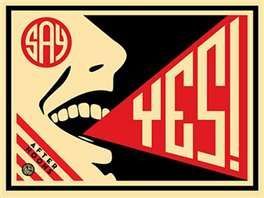
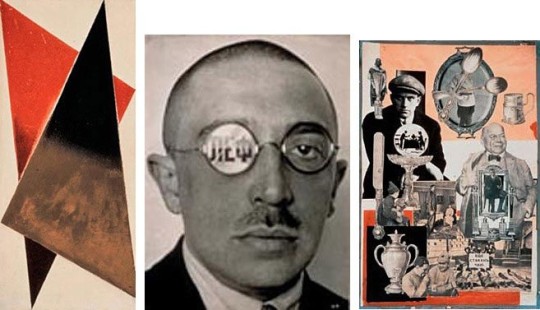
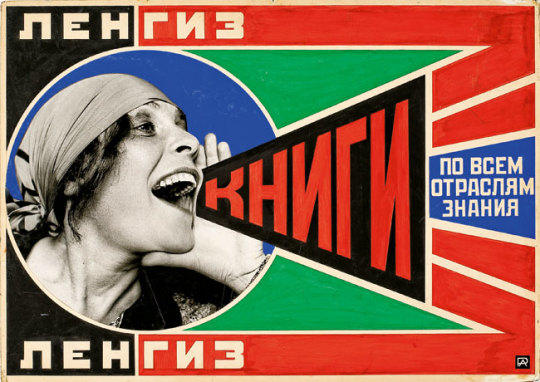
Alexander Rodchenko
Alexander Rodchenko is a Russian painter, photographer and also a graphic designer. HImself and Popova shaped Constructivism, which questioned the fundamental properties of art and asked what its place should be in a new society. The Constructivists challenged the idea of the work of art as a unique commodity, explored more collective ways of working, and looked at how they could contribute to everyday life through design, architecture, industrial production, theatre and film.
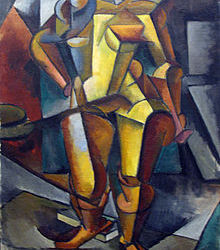

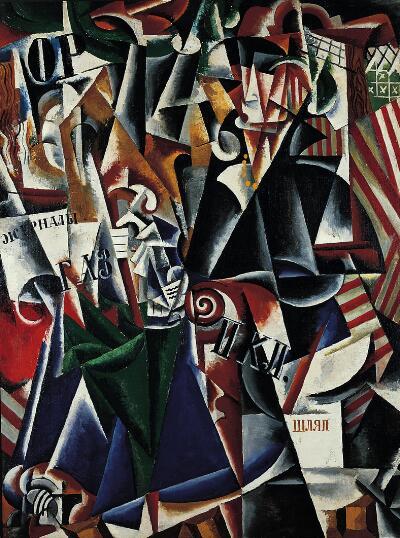
Lyubov popova (Russian , 1889-1924)
The traveler, 1915
Like many young women from prosperous Russian families at the turn of the twentieth century, Popova traveled widely in Europe; unlike her contemporaries, however, she used her travels to develop her talents as a painter, working constantly, studying the Old Masters, and enrolling in the Parisian Académie de la Palette, where her teachers included Jean Metzinger, an early practitioner of Cubism. This abstracted composition suggests the speed and sense of dislocation associated with modern travel and seems to include an oblique self-portrait in the central figure: a woman wearing a yellow necklace and high-collared cape, who reads a magazine or newspaper in her seat on a train, grasping a green umbrella in one gloved hand. Snatches of text (including the Russian words “magazines,” “danger zone,” and “natural gas”) suggest advertisements within the compartment and signposts outside its windows. With her use of found text, fragmented forms, and shapes rhythmically repeated to create a sense of acceleration, Popova here assimilated both French Cubism and Italian Futurism in a uniquely Russian hybrid known as Cubo-Futurism.
looking at the peice of Popova what came to mind was photomontage and Just looking at it i saw different pictures placed in this painting. She was a constructivist, Popova and her four fellow Constructivists declared that easel painting was to be abandoned and all creative work was to be for the people and the making of the new society. Although she was a painter she used her art as a movement for the people in class i was taught that constructivism was a movement for art. It was simply the russian version of modernism. Constructivism was formed in 1914, before the October Revolution in 1917 and the most important figure, which most associate to stand as its founder, was Vladimir Tatlin. Focused on the careful technical analysis of modern materials, and the refusal of the idea that art should be produced for the art’s sake but as a practice for social purposes, Constructivism borrowed the ideas of the above-mentioned Cubism, but also Futurism and its ideas rooted in the celebration of the modern man and the fast and furious machines. It also relied heavily on the criticism and the denial of the spirituality that Suprematism and its leading figure Malevich promoted.
7 notes
·
View notes
Photo

The Lenin Institute for Librarianship by Ivan Leonidov (1927)
http://socks-studio.com/2018/10/30/the-lenin-institute-for-librarianship-by-ivan-leonidov-1927/
Ivan Illich Leonidov (1902-1957) designed the Lenin Institute for Librarianship (the collective scientific and cultural center of the USSR) in 1927 as his thesis project at the VKhUTEMAS, the art and technical School of Moscow, with Alexander Vesnin as his tutor.
The Institute is made of a series of individualized shapes embodied by clear geometrical forms – mostly rectangular boxes and a sphere – which are boldly composed together. The three main buildings of the institute are a massive library with five million books joined by the Institute of librarianship, both contained in a high-rise building; the auditorium which also functions as a planetarium and as a speaking platform for mass demonstrations, located in a huge glass sphere elevated from the floor through a metallic structure; and the actual research institute hosting the research labs, a horizontal slab, suspended, which also connects the two other buildings. The single volumes are related through the composition of two asymmetrical axes on a decentralized circular platform where both the auditorium and the library are located. The library axis is also prolonged by a straight suspended roadway leading to the city center.
Read more on:
http://socks-studio.com/2018/10/30/the-lenin-institute-for-librarianship-by-ivan-leonidov-1927/
49 notes
·
View notes
Photo

Concrete High relief "Re SZ-35", Mara Ruehl
The topic in my artwork is colour and surface, as well as light and form. It is about the exploration of image surfaces and the questioning of the illusion of change, generated by colour and shape. In my sculptural relief works, the change aspect enhanced by form and space. In contrast to my two-dimensional colorfields which "movements" happen without an intervention of the viewer, his interaction here is absolutely necessary. Only through the viewers own relocation a completely different view of the artwork arises, which in turn generates significant changes within the work. You are interested in more details about my intention? Please read “About Mara Ruehl” under my profile. Please visit www.mararuehl.de Keywords: relief, 3d, structure, sculpture, geometrical, minimal art, concrete art, constructivism, 3dimensional, zero, sculptural relief, constructive art, Kazimir Malevich, Liubov Popova, Alexander Vesnin, Rodchenko, Varvara Stepanova, wallsculpture, concept art, Hans Richter, Theo van Doesburg, Alexander Rodchenko, wall art sculpture,
https://www.saatchiart.com/art/Sculpture-Concrete-High-relief-Re-SZ-35/666837/3017609/view
1 note
·
View note
Photo

Description: ÉCOLE FRANÇAISE DU XIXe SIÈCLE.
L’empereur Nicolas Ier de Russie (1796-1855)
Est: €1,200 - €1,500
entouré de son
état-major et de ses conseillers.
Lithographie colorée signée en bas à gauche « M. Adolphe »
et imprimée chez Lemercier à Paris, le représentant aux côtés
des membres formant son gouvernement dont, de gauche à
droite : le général Liprandi, le général Osten Sacken, le général
Dannenberg, le prince Menchikov, l’amiral Ricord, le comte
de Nesselrode, le tsarévitch Alexandre (futur tsar Alexandre
II), le grand-duc Michel Nicolaïévitch, le grand-duc Nicolas
Nicolaïévitch, le grand-duc Constantin Nicolaïévitch, le
comte Brock, le général Luders, le maréchal Paskévitch, le
général Rudiger et le prince Gortchakov. Conservée dans un
encadrement moderne à baguette dorée.
T races d’humidités, mais bon état général.
A vue : H.: 43, 5 cm – L.: 57, 5 cm.
Cadre : H.: 60 cm – L.: 74 cm.
Notes: Russian culture has a long history. Russia can claim a long tradition of dividend in many aspects of the arts, especially when it comes to literature and philosophy, classical music and ballet, architecture and painting, cinema and animation and politics, which all had considerable influence on world culture. The country also has a flavorful material culture and a tradition in technology.
Russian culture grew from that of the East Slavs, with their pagan beliefs and specific way of life in the wooded areas of far Eastern Europe. Early Russian culture was much influenced by neighbouring Finno-Ugric tribes and by the nomadic peoples of the Pontic steppe (mainly of Kipchak and Iranic origin). In the late 1st millennium AD the Varangians (supposedly Scandinavian Vikings), also took part in the forming of Russian identity and the Kievan Rus' state. Orthodox Christian missionaries began arriving from the Eastern Roman Empire in the 9th century, and Kievan Rus' converted to Orthodox Christianity in 988. This largely defined the Russian culture of the next millennium as the synthesis of Slavic and Byzantine cultures. After the fall of Constantinople in 1453, Russia remained the largest Orthodox nation in the world and claimed succession to the Byzantine legacy in the form of the Third Rome idea. At different points in its history, the country was also strongly influenced by the culture of Western Europe. Since the reforms of Peter the Great, for two centuries Russian culture largely developed in the general context of European culture rather than pursuing its own unique ways. The situation changed in the 20th century, when the Communist ideology became a major factor in the culture of the Soviet Union, where Russia, in the form of the Russian SFSR, was the largest and leading part.
Nowadays, Russian cultural heritage is ranked seventh in the Nation Brands Index, based on interviews of some 20,000 people mainly from Western countries and the Far East. Due to the relatively late involvement of Russia in modern globalization and international tourism, many aspects of Russian culture, like Russian jokes and Russian art, remain largely unknown to foreigners.
Architecture
Russian architecture began with the woodcraft buildings of ancient Slavs. Since the Christianization of Kievan Rus', for several centuries Russian architecture was influenced predominantly by the Byzantine architecture, until the Fall of Constantinople. Apart from fortifications (kremlins), the main stone buildings of ancient Rus' were Orthodox churches, with their many domes, often gilded or brightly painted. Aristotle Fioravanti and other Italian architects brought Renaissance trends into Russia. The 16th century saw the development of unique tent-like churches culminating in Saint Basil's Cathedral. By that time the onion dome design was also fully developed. In the 17th century, the "fiery style" of ornamentation flourished in Moscow and Yaroslavl, gradually paving the way for the Naryshkin baroque of the 1690s. After Peter the Great reforms had made Russia much closer to Western culture, the change of the architectural styles in the country generally followed that of Western Europe.
The 18th-century taste for rococo architecture led to the splendid works of Bartolomeo Rastrelli and his followers. During the reign of Catherine the Great and her grandson Alexander I, the city of Saint Petersburg was transformed into an outdoor museum of Neoclassical architecture. The second half of the 19th century was dominated by the Byzantine and Russian Revival style (this corresponds to Gothic Revival in Western Europe). Prevalent styles of the 20th century were the Art Nouveau (Fyodor Shekhtel), Constructivism (Moisei Ginzburg and Victor Vesnin), and the Stalin Empire style (Boris Iofan). After Stalin's death a new Soviet leader, Nikita Khrushchev, condemned the "excesses" of the former architectural styles, and in the late Soviet e
http://www.invaluable.com/auction-lot/-1-c-0D94A389F6…
0 notes
Video
vimeo
YADRO Impulse from SILA SVETA on Vimeo.
In October 2017 Russian IT company YADRO presented its latest groundbreaking products – VESNIN server and TATLIN data storage platform – during a grand event in the Moscow Planetarium, fully organized by Sila Sveta. The main presentation and dome projection were also created in the studio and took place in the main Star Auditorium of the planetarium.
Art Director: Daniil Kutuzov
Producers: Dmitry Babanin, Aleksandra Tretiakova
Creative Director: Alexander Us
Show Director: Sergey Povarnitsyn
Script: Vadim Pugin
Production Director: Mikhail Dadaev
General Producers: Alexey Rozov, Alexander Us
Supervisor: Oleg Barankin
Concept Artists: Ekaterina Konovalova, Stas Bashkatov
CG Artists: Alexander Varlamov, Andrey Vyaznikov, Erik Baymukashev, Sergey Akulenok, Roman Kuzminih, Maxim Meshkov, Maxim Bitiukov
Technical Director: Nikolay Kononov
Video Engineers: Alexander Korneev, Sergey Pervakov
Lighting Designers: Roman Vakulyuk, Anastasia Zhukova
Technical Production: Sergey Zakharov, Pavel Ivaschenko, Dmitry Lobov, Mikhail Portnov, Yury Volodkin, Fedor Selin, Mikhail Churbakov
Music & Sound Design: Monoleak
Filming: Evgeny Arkhipov, Anton Arkhipov, Sergey Baryshnikov
Editing: Evgeny Arkhipov, Anton Arkhipov
0 notes
Text
La tragedia de Leonidov | José Ramón Hernández Correa
El estudiante de arquitectura Ivan Ilich Leonidov hizo el proyecto final de carrera más famoso de la historia. Tanto es así que aparece en toda Historia de la Arquitectura Moderna que se precie.
[...]
José Ramón Hernández Correa, Doctor Arquitecto
Toledo · enero 2011
#Aleksander Brodsky#Alexander Vesnin#arquitectura comunista#arquitectura de papel#arquitectura moderna#arquitectura monumental#arquitectura rusa#arquitectura socialista#arquitectura soviética#ciudad socialista#constructivismo#constructivismo ruso#historia#iconografia#Ilya Utkin#Ivan Ilich Leonidov#Jelena Prokopljević#José Ramón Hernández Correa#Le Corbusier#Mikhail Belov#Mikhail Flippov#modernismo soviético#modulor#Nadia Bronzova#personaje#socialismo#teoría#teoría e historia#unión soviética
2 notes
·
View notes
Photo

Viktor Vesnin, Leonid Vesnin, Le Corbusier, Alexander Vesnin and Andrey Burov, Moscow 1928
#Viktor Vesnin#Leonid Vesnin#Le Corbusier#Alexander Vesnin#Andrey Burov#Vesnin brothers#constructivism#modernism#Soviet Union#USSR#1928
23 notes
·
View notes